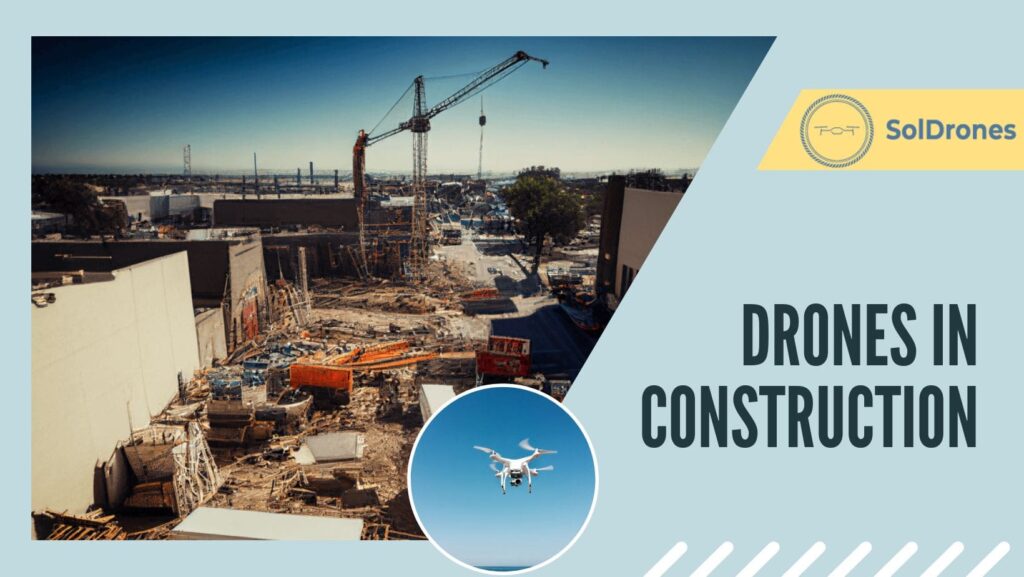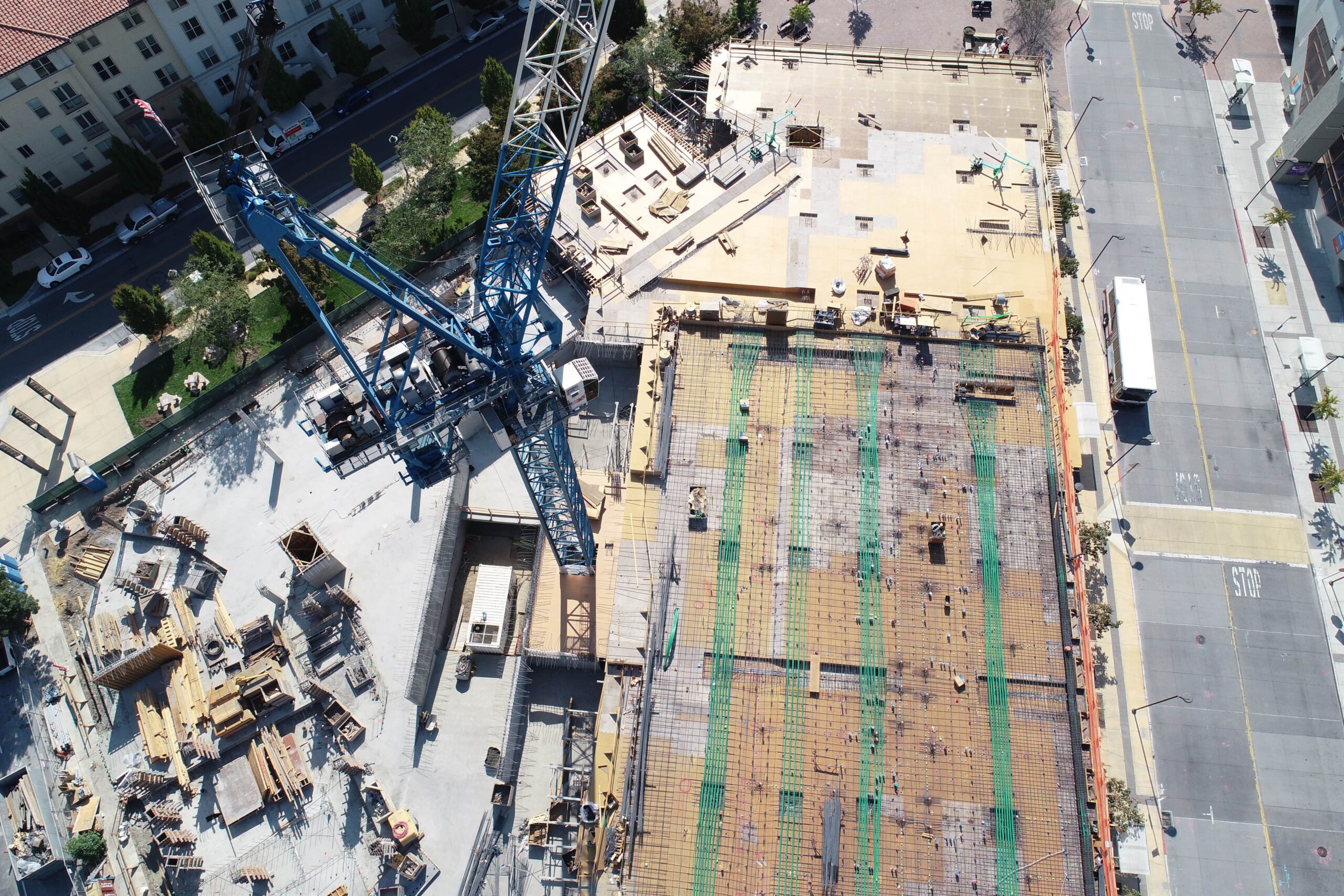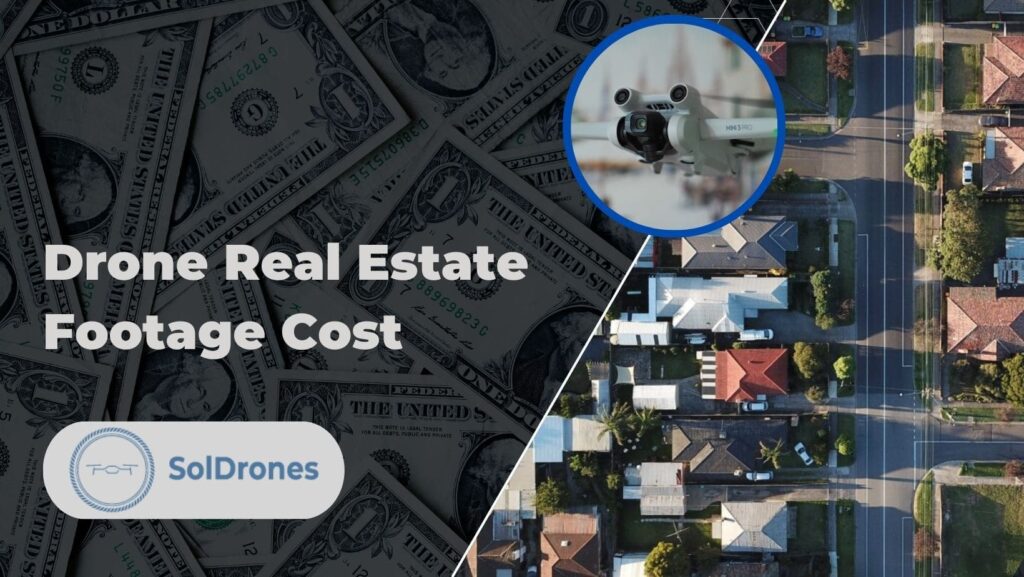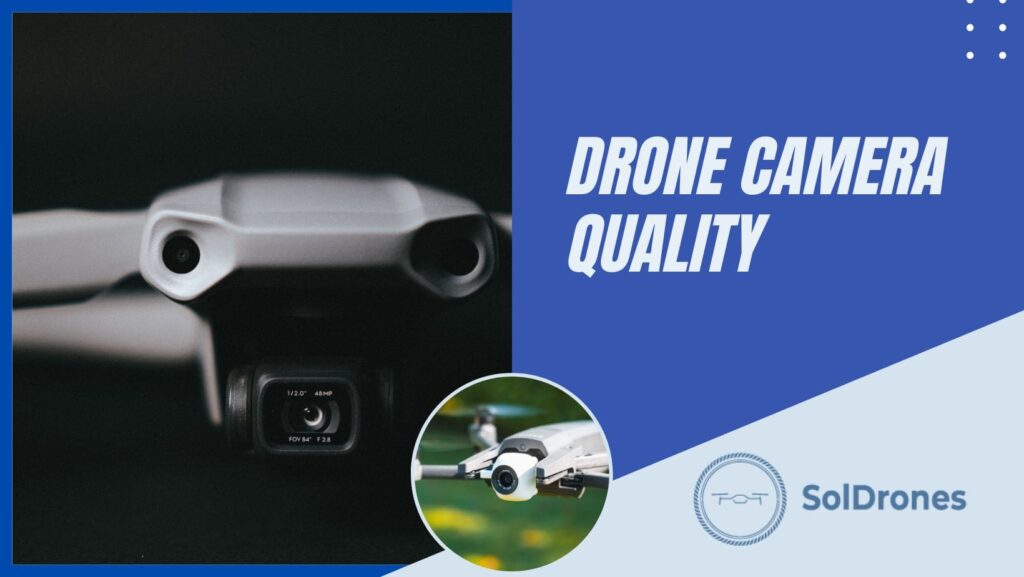Drone technology continues to evolve rapidly and has become an essential tool for construction managers, general contractors, and architects.
In this guide, we’ll take you through the advantages of utilizing drones in construction endeavors and how they offer a one-of-a-kind bird’s eye view providing more efficiency and safety.
We will also discuss risks and safety considerations when employing unmanned aerial vehicles on construction sites.
If you’re considering incorporating drones in your construction projects, we’ll help you choose the right drone equipment for your business, including drones, gear, and software solutions that can enhance your project management capabilities.
Some of the top drones used throughout construction sites today include:
We’ll cover some important regulations and best practices for drone use in the construction industry as well as outline steps to start a successful drone-based business.
By understanding these crucial aspects, you’ll be well-equipped to leverage this cutting-edge technology for efficient planning, inspection of infrastructure, planned maintenance tasks, and overall project success.
Key Highlights
- Drones are helping the construction industry evolve at a rapid pace
- Construction operations are becoming safer and more efficient through drone technology
- There are several key factors to consider when selecting a drone for a construction operation
No products found.
The Construction Industry Drone Evolution
The construction sector is undergoing a noteworthy transformation with the incorporation of drones. The traditional methods of managing construction sites are transitioning to more efficient and innovative solutions that incorporate drone technology.
This has opened up numerous advantages for those involved in the construction process, from managers to contractors and architects.
For example, drone operators can easily conduct site inspections, track project progress, and generate high-resolution imagery and 3D models or orthomosaic maps. Before the incorporation of drones in construction, a worker tasked with inspecting a tall building or structure would need to physically climb to the top, which poses safety risks.
However, with an aerial drone, the same worker can operate from the ground and capture images and footage of the structure from a safe distance, eliminating the need for dangerous climbs. This not only improves worker safety but also saves time and resources by providing a quicker and more efficient means of inspection.
Commercial drones are unlocking aerial data and perspectives that dramatically alter how the construction industry operates.
Improved Efficiency Through Automation
In addition to providing valuable visual data, drones can be programmed to perform repetitive tasks such as surveying land or inspecting structures autonomously. By automating these processes with drone technology, construction companies can save time and resources while improving overall efficiency. There are also several human risk factors reduced, such as:
- Safety: Drones eliminate the need for workers to physically access dangerous areas like roofs or scaffolding during inspections; reducing workplace accidents.
- Data Accuracy: As human error is minimized through automation provided by drones, they ensure accurate measurements which leads to better decision-making during planning stages.
- Faster Decision Making: Real-time information captured by drones allows project stakeholders to make informed decisions quickly, preventing delays and additional costs.
With the increasing adoption of drones in construction, industry professionals need to understand how to choose the right drone, implement software solutions, and adhere to regulations.
Benefits of Using Drones in Construction
By leveraging drones, construction professionals can improve safety, efficiency, and accuracy of their projects. In this section, we will explore some key benefits that make drones an essential tool for modern construction sites.
Safety Enhancements
Particularly for large-scale construction projects, drones add safety and alleviate workers from a lot of the dangerous work such as climbing tall structures or going between tight crevasses for inspection. With detailed aerial imagery and real-time data collection capabilities, drones allow site managers to identify potential hazards and address them promptly without putting human lives at risk.
Improved Efficiency
Time-consuming processes like land surveying and progress monitoring can now be automated while providing up-to-date data to site operators. Capable of capturing large amounts of data from multiple angles while covering vast areas within minutes – something that would take days using traditional methods – drones enable rapid construction site progress. This rapid data acquisition allows project teams to make informed decisions faster, ultimately leading to shorter project timelines and reduced costs. A few examples of improved efficiency benefits include:
- Aerial Surveys: High-resolution aerial images captured by drones provide accurate topographical information that helps architects design more efficient building layouts based on existing terrain conditions.
- Progress Monitoring: Regular drone flights enable stakeholders to track project progress remotely through detailed visual updates instead of relying solely on manual reports or physical site visits.
- Inspections: Equipped with advanced sensors like thermal cameras, drones can detect structural issues such as water leaks or insulation gaps before they become costly problems during the construction process.
Increased Accuracy
Drones offer unparalleled accuracy in data collection, thanks to their high-resolution cameras and advanced sensors. For instance, drone surveying can achieve accuracies of up to 1-2 centimeters per pixel, making it a highly reliable method for measuring distances, elevations, and volumes on construction sites. This level of precision helps reduce errors during the design and execution phases while also minimizing material waste.
Better Communication & Collaboration
Drone-generated data facilitates better communication among project stakeholders by providing visual documentation that is easy to understand and share. High-quality aerial images or 3D models generated from drone flights can be easily integrated into Building Information Modeling (BIM) systems or other collaboration platforms like Procore. This seamless flow of information promotes transparency between team members, leading to more efficient decision-making processes throughout the project lifecycle.
Risks and Safeties of Drones on Construction Sites
Despite the advantages of drones in construction, it is important to consider the potential hazards associated with their use and devise strategies for minimizing them while preserving a secure work atmosphere.
Potential Risks
- Collisions: A drone may collide with other objects or people if not operated carefully. To minimize this risk, drone pilots must always follow safety guidelines, maintain line-of-sight during operation, and avoid flying in crowded areas.
- Data Security: Drones can capture sensitive information that could be vulnerable to unauthorized access. It’s critical to ensure data security by encrypting transmissions and storing captured data securely.
- Invasion of Privacy: Flying over private property nearby a construction zone without permission can lead to privacy invasion claims. Always obtain necessary permissions before conducting aerial surveys or inspections.
- Noise Pollution: Some drones produce significant noise levels which may disturb nearby residents or wildlife habitats. If this is a concern, some quieter models can be used, particularly when building near residential areas.
Safety Measures for Drone Use in Construction
To ensure safe operations on construction sites, consider implementing the following measures:
- Hire a certified remote pilot who has completed an FAA-approved training program such as Part 107 certification This ensures they have the necessary knowledge and skills to operate drones safely.
- Develop a comprehensive safety plan that outlines procedures for drone operations, including pre-flight inspections, emergency protocols, and communication with ground personnel. This will help minimize risks associated with drone use on construction sites.
- Establish designated no-fly zones within the construction site to prevent accidents or collisions. These areas should be marked and communicated to all workers on-site.
- Regularly maintain your drone equipment by conducting routine checks and addressing any issues promptly. Proper maintenance can reduce the likelihood of malfunctions during flight.
Regularly inspecting your drone equipment and addressing any issues quickly will not only help you stay compliant with regulations but also promote a safer work environment for all involved.
Choosing the Right Drone for Construction
Selecting the right drone for your construction project is crucial to ensure optimal results and efficiency. With so many options available, it is essential to comprehend which characteristics are most relevant when selecting a drone for construction work.
Payload Capacity and Camera Quality
The main aim of drones in construction is to acquire top-notch aerial photos and videos which can be utilized for a variety of tasks, including examination of the site, tracking progress, and more. Therefore, choose a drone with an adequate payload capacity that can carry professional-grade cameras like DJI Zenmuse X7. High-resolution imagery will provide you with detailed information about your project site.
Flight Time and Battery Life
Longer flight times allow drones to cover larger areas without needing frequent battery replacements or recharging breaks. Look for models offering at least 20-30 minutes of flight time per charge, such as the DJI Matrice 300 RTK.
GPS Accuracy and RTK Capability
Highly accurate GPS systems are vital when mapping large-scale projects or creating precise measurements on-site. Drones equipped with Real-Time Kinematic (RTK) technology offer centimeter-level accuracy by correcting GPS data in real-time during flights that are ideal for surveying applications.
Obstacle Avoidance Systems
Safety should always be a top priority on any construction site and this is often achieved through the obstacle avoidance system. Examples of drones with good obstacle avoidance systems include:
- DJI Phantom 4 RTK: This drone features a comprehensive obstacle-sensing system, making it suitable for construction site mapping and surveying.
- Parrot Anafi USA: With its robust design and powerful AI-based obstacle avoidance technology, this drone is an excellent choice for construction professionals.
Weather Resistance
Weather is always a factor almost anywhere and sometimes, there’s pressure to maintain construction progress despite poor weather. It’s advantageous to invest in a drone with weather-resistant capabilities to ensure uninterrupted operations even during adverse conditions.
Software Solutions for Drone Construction
As drones have become a commonplace tool in construction, software solutions have been developed to help manage and track their use onsite. These tools provide the capability to process, analyze, and present data obtained from drones in a streamlined manner, facilitating better decision-making. Some examples of popular software solutions specifically for the construction industry include:
AirMap
AirMap is a comprehensive airspace management platform designed for both recreational and commercial drone operators. It provides real-time information about airspace restrictions, weather conditions, flight planning tools, and more – ensuring safe and compliant flights.
Pix4Dmapper
Pix4Dmapper is a photogrammetry software that turns aerial images captured by drones into accurate 2D maps or 3D models. This tool allows you to generate detailed topographic surveys, calculate volumes of materials on-site quickly or create as-built documentation with ease.
DroneDeploy
DroneDeploy offers an all-in-one solution for mapping, modeling, analytics, and collaboration features tailored explicitly toward construction professionals’ needs. With this platform’s help, you can automate flight plans across multiple projects while monitoring progress over time using powerful visualization tools like heatmaps or contour lines.
Skyward.io (Verizon)
Skyward.io is a Verizon-owned drone management platform that provides flight planning, airspace intelligence, and compliance tools for commercial operators. It also integrates with various construction-specific software like Procore or Bluebeam to help streamline your workflows further.
Propeller Aero
Propeller Aero specializes in providing accurate 3D site models and analytics for the construction industry. Their platform allows you to track earthworks progress, monitor stockpile volumes, and collaborate with team members using cloud-based technology.
In addition to these specialized software solutions, it’s good to consider integrating your drone data into existing project management systems or BIM (Building Information Modeling) platforms such as Autodesk BIM 360, Procore, or PlanGrid.
This integration will ensure seamless collaboration between all stakeholders involved in the project while maximizing the value of your drone investment.
Software solutions for drone building can be a great asset in terms of efficiency and cost-effectiveness over time. Regulations and best practices are important considerations when using drones on construction sites, as they will ensure the safety of personnel and compliance with local laws.
Regulations and Best Practices for Drone Use in Construction
Drone use in construction is governed by regulations and best practices to ensure safety, compliance, and efficiency.
Federal Aviation Administration (FAA) Regulations
In the United States, the Federal Aviation Administration (FAA) governs all commercial drone operations through Part 107 of the Federal Aviation Regulations. To legally operate a drone for construction purposes, you must:
- Obtain a Remote Pilot Certificate from the FAA by passing an aeronautical knowledge test.
- Register your drone with the FAA if it weighs between 0.55 lbs (250 grams) and 55 lbs (25 kg).
- Follow operational limitations such as maximum altitude (400 feet above ground level), speed limits (100 mph), daylight-only operation, maintaining visual line-of-sight with your drone at all times, etc.
Awareness of Local Laws & Airspace Restrictions
Beyond federal regulations, it’s crucial to be aware of any local laws or airspace restrictions that may apply to your specific construction site location. For example:
- Contact local authorities or property owners for permission before flying over private land or restricted areas.
- Avoid flying near airports or other sensitive locations without proper authorization from air traffic control.
- Create flight plans using tools like SkyVector or the B4UFLY app to ensure you’re not entering restricted airspace.
Safety Best Practices for Drone Use in Construction
In addition to following regulations, adhering to best practices can help maximize the benefits of using drones on construction sites while minimizing risks. Some recommended best practices include:
- Maintain equipment: Regularly inspect and maintain your drone, ensuring that all components are functioning correctly and that the software is up-to-date.
- Pilot training: Ensure that all drone pilots have proper training and certification, as well as experience with the specific type of drone being used on-site.
- Create a safety plan: Develop a comprehensive safety plan outlining procedures for emergencies such as loss of control or collision avoidance. This should also include guidelines for notifying site personnel when drones are in operation.
- Data security: Implement data protection measures to safeguard sensitive information collected by drones during flights. This may involve encryption, secure storage solutions, and access controls.
- Evaluate insurance needs: Determine whether additional insurance coverage is necessary for potential liabilities associated with drone operations on construction sites. By understanding and adhering to both federal regulations and industry best practices, you can safely integrate drones into your construction projects, maximizing their potential benefits while mitigating risks.
Familiarizing oneself with the protocols and standards for drone utilization in construction is crucial to ensure safety and conformity. Once you have a grasp of the rules and standards for drones in construction, it’s time to look into launching your own successful drone-based building enterprise.
How to Start a Drone Construction Business
If you’re a construction operator or drone pilot looking to offer services through the construction industry, starting your own drone construction business can be an exciting and lucrative opportunity. To get your drone construction business up and running, you must develop a comprehensive business plan.
Create Your Business Plan
The first step towards launching any successful venture is creating a solid business plan. This document will outline your goals, target market, competition analysis, financial projections, and marketing strategies. It’s essential for securing funding from investors or lenders and serves as a roadmap for your company’s growth.
Select Your Equipment and Software
Investing in high-quality drones specifically designed for use on construction sites is crucial. Consider factors such as camera quality, flight time capabilities, GPS accuracy, and payload capacity when selecting equipment. Some popular options include:
- Autel EVO Lite Series+
- DJI Matrice 300 RTK
- Parrot Anafi USA
- DJI Mavic 3 Pro
- Autel EVO II Pro V3
- DJI Mini 4 Pro
In addition to hardware investments like drones themselves; consider investing in software solutions tailored specifically toward managing data collected by these devices during flights over job sites (such as mapping applications). Examples of reputable software providers include:
- Pix4D
- Propeller Aero
- DroneDeploy
Obtain Necessary Licenses and Certifications
To operate a drone construction business legally, you’ll need to obtain the appropriate licenses and certifications. In the United States, this includes acquiring a Remote Pilot Certificate from the Federal Aviation Administration (FAA) by passing their Part 107 exam. Furthermore, it is critical to be aware of the local laws that regulate drone utilization in your area.
Develop Your Marketing Strategy
Your marketing strategy should focus on targeting construction managers, general contractors, and architects who can benefit most directly from your services. Some effective marketing tactics include:
- Creating an informative website showcasing your services and portfolio of work.
- Networking with industry professionals at conferences or trade shows.
- Promoting your business via social media platforms like LinkedIn or Instagram.
- Establish Strong Partnerships within Construction Industry
- Building relationships with key stakeholders such as builders, engineers, and other trades is crucial to long-term success.
By collaborating closely with these individual organizations, you’ll be able to demonstrate value proposition effectively and secure ongoing contracts for future projects.
Final Thoughts
The utilization of drones in the construction industry is an ever-growing field, and with proper knowledge, you can stay ahead of your rivals. We hope this guide gave you the information you need to feel optimistic about the use of drones in construction, as well as how to start your drone business. Staying up-to-date with the latest advancements in drone technology will enable you to leverage its full potential.
Take advantage of the latest technology and use drones in your construction projects to save time, money, and increase safety. Learn how to get started with our comprehensive guide on using drones for construction in 2023!







